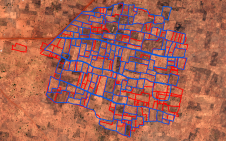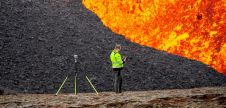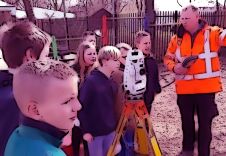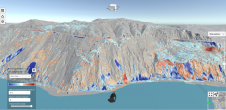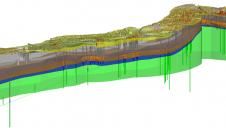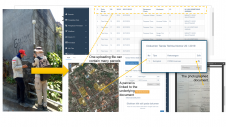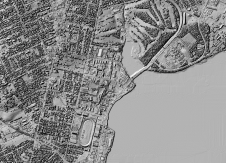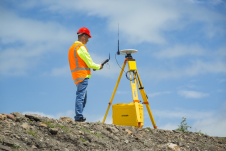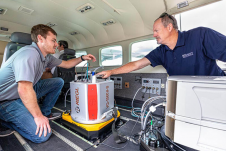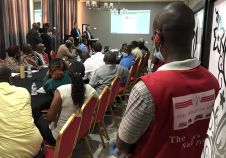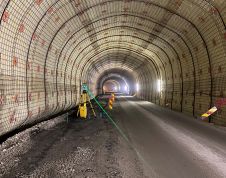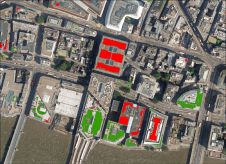The Future of Geospatial
Are We Everyone’s Friend or do They Not Know We Exist?
This article was originally published inGeomatics World。
The geospatial community will continue to thrive, but its success is conditional on its members being able to express and rationalize what they do, why, how and for whom, according to Vanessa Lawrence.
我带给“地理空间的未来”的观点是在过去的五年中为发展中国家和发达国家的高级政府官员提供了帮助,并向世界上一些最大组织的董事会室高级成员介绍了。他们都希望思考一下位置的增加维度如何对他们的决策产生影响。
尽管我们在该部门中使用“地理空间信息”,“我们的地理空间社区”甚至“ GIS团队”等术语,但大多数政府高级官员和组织高级董事通常不承认这些条款。他们正在考虑增强其国家或组织的信息基础架构,或者正在考虑通过使用其他竞争组织尚未发现的额外数据来源而获得的竞争优势。
The boundaries between ‘geospatial’ and so many other disciplines, in most users’ minds, are simply non-existent. We too may need to break down these boundaries more than we have done to date, in order to attract interest in what we do. And not just in the boardroom; young graduates around the globe are flocking to Data Science and Space roles, but are they equally attracted to Geospatial? The answer currently is ‘no’ as so many still do not understand the power of our work and the benefit to society it can bring.
一切都发生在某个地方
Talking to a Professor of Data Science who ‘zoomed’ me recently, he had little knowledge of geospatial, let alone that it underpinned some of the biggest decisions taken each day. We discussed its use in government and their operations from managing resources, administering services, to tackling emergencies. We covered its role in industries, including construction, the property market, utilities, insurance, defence and security, navigation, waste and asset management, and logistics. Our discussion turned to its use at global scale, to assist understanding and to tackle some of the biggest issues facing the globe: environmental issues such as climate change, food security, identifying poverty and inequality and underpinning the measuring and monitoring of United Nations Sustainable Development Goals (UN-SDGs).
By the end of the conversation, the phrase that I first used when writing forGIS Europemagazine in 1993 - ‘everything happens somewhere’, was ringing in his head together with the understanding that geospatial information is now seen as a vital part of a national and organizational information infrastructure.
Fitting in
So where do we fit in the future? Firstly, we know geospatial is an economic contributor. The geospatial industry globally was valued at £300bn by GeoBuis Report (2019). According to recent economic research, an economic uplift can be expected to occur by organising geospatial information within a National Spatial Data Infrastructure (NSDI) or a similar infrastructure. In a study undertaken by the Boston Consulting Group (BCG) and a report by the UK Geospatial Commission (2018), it was estimated that the fiscal uplift could total up to £14bn for the United Kingdom alone.
We also know that we overlap considerably with the Space industry as well as the Data Science and AI industry (Figure 1). Each year, we become more beneficial to them as the interoperability and open systems approach around the globe is being increasingly adopted across our industry.

The Space industry is seeing significant growth in the earth observation sector often backed by venture capital investment (Figure 2). The ever-increasing number of and the move to smaller sized-satellites, downloading not only traditional bandwidths but now also small-sat radar and video imagery together with the introduction of High-Altitude Platforms (HAPs) that not only use Solar Energy but now also Hydrogen fuel, is revolutionizing the Remote Sensing community. But irrespective of how versatile these platforms are, they generally still only generate data that is not ‘in context’.
It is only the combination of their outputs with multiple other pieces of locational information from ‘other providers’ which makes the Space-based data become useful information for the decision-maker. These ‘other providers’ may, at one end of the spectrum, be humans using their mobile phones in a passive locational sense or, at the other end, highly accurate, authoritative geospatial data from either a government or the private sector.
通过将AI算法添加到地理空间决策过程中,每秒可以进行数百万计的计算,从而有助于在任何位置数据堆栈中的数据量表,以易于分析 - 并提供一致的结果。
It can therefore be concluded that the geospatial community, the space community and the AI community have a symbiotic, mutually reinforcing relationship. Geospatial information provides the context to the work of the Space and the AI industry and hence I predict the geospatial community will grow in importance as the benefits it brings to Space and AI is increasingly recognised.

Geospatial information in a digital society
The UK Geospatial Commission (2020) stated In ‘Unlocking The Power of Location: the UK’s Geospatial Strategy 2020 to 2025’ that ‘by 2025, the UK will have a coherent national location data framework underpinning a flourishing digital society’ which highlights the importance of geospatial information to a country; and many similar statements are referenced around the globe. Drawing on the recognition of this importance, together with the symbiotic relationship with other growth sectors and the fact that ‘everything happens somewhere’ is vital to solving some of the globe’s biggest challenges. It is therefore necessary to consider how our community should evolve for it to prosper - and not be subsumed into adjoining communities.
显然,将自己与邻近社区保持一致将确保我们能带来的利益得到认可。但是,有许多问题需要回答我们成功。These include such questions as ‘Should we promote our role more within the measuring and monitoring of the globe’s grand challenges so that we are an attractive community to join?’ Should we consider perhaps using not only ‘geospatial professional’ but also ‘geodata scientist’ within our vocabulary? Should our graduate courses have greater intensity of focus on computer science than they do today? Should we simplify our messages, so more people understand that ‘geospatial’ underpins everyone’s daily lives?
在过去的十年中,地理空间已成功地用于解决从制造业到金融市场的许多行业中的认真决策,当然,最近还为Covid-19-19的大流行中进行的许多分析提供了基础。但是,对地理空间所产生的影响的意识始终类似于“内部”计算机的“英特尔”,但甚至没有标签来识别自己!这必须改变我们的身份,不要迷失于其他主题领域。
Due to our historical roots, technology has often been the lead focus for the geospatial community. Today, we need to ensure that the focus is changed to one that emphasises the impact we can have organizationally, using globally adopted standards and ensuring our people have the skills to meet the growth of geospatial, as more data becomes available from so many sources (Figure 3).

With a subject area measuring and monitoring the biggest issues facing the globe which is no longer hampered by being ‘technology led’, that already adopts international protocols and standards and is needed by adjacent growth industries, it is clear that the community will continue to thrive.
但是,我们的成功是有条件的,我们所有人都能够表达和合理化我们的工作,为什么要做,我们为谁做以及我们如何做。这必须是每个人都理解且易于掌握的语言,也许总是从现在27岁的短语开始,“一切都发生在某个地方”。
Further reading
- Geobuis报告(2019年),https://geoguiz.com/geobuiz-report-2019。
- UK geospatial Commission (2018),https://www.gov.uk/government/publications/geospatial-commisssion-annual-plan-2019-2020。
- UK geospatial Commission (2020) Unlocking the power of location: the UK’s geospatial strategy 2020 to 2025.
Make your inbox more interesting.Add some geo.
Keep abreast of news, developments and technological advancement in the geomatics industry.
免费注册

